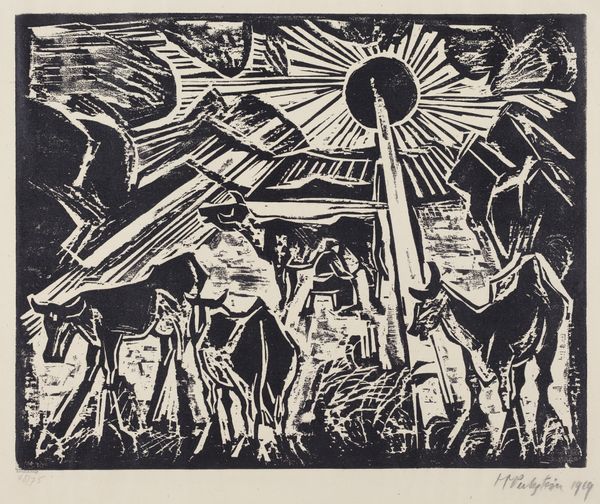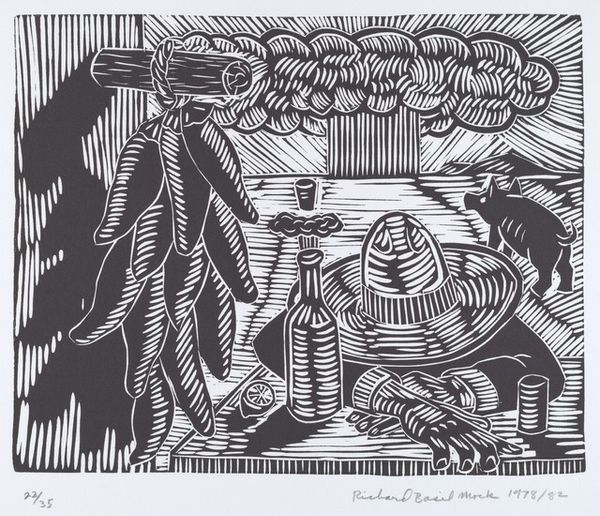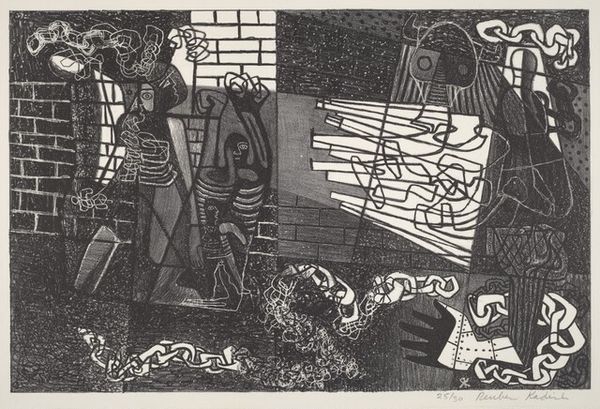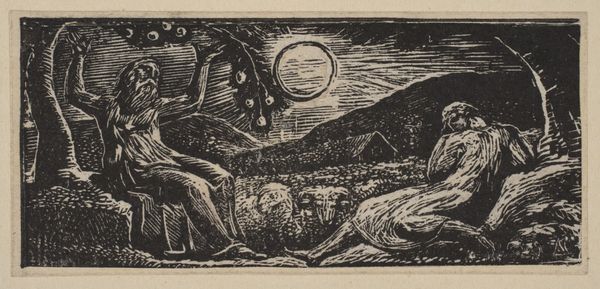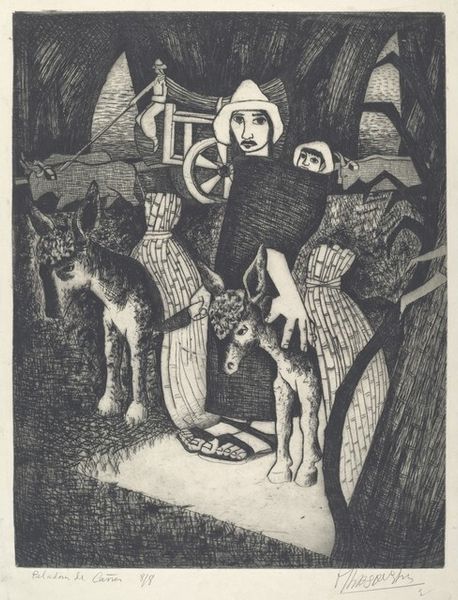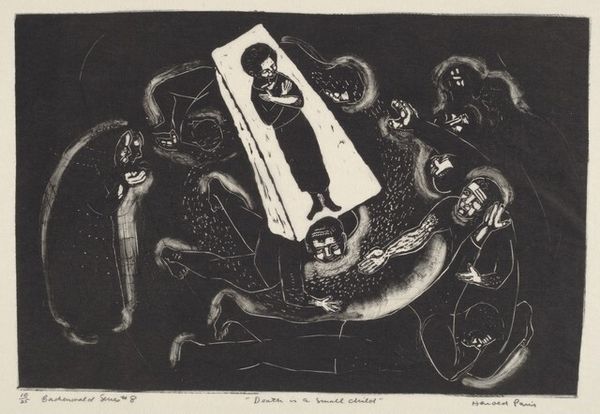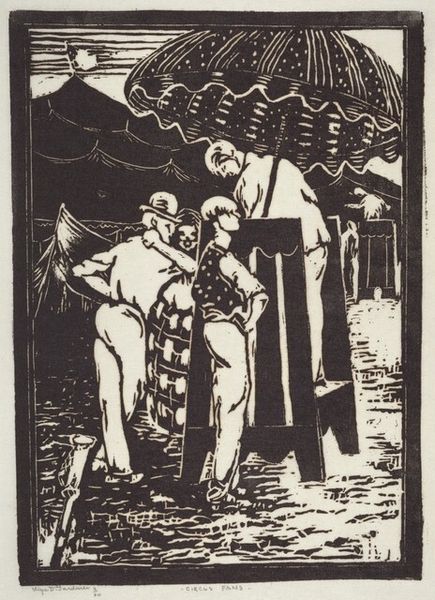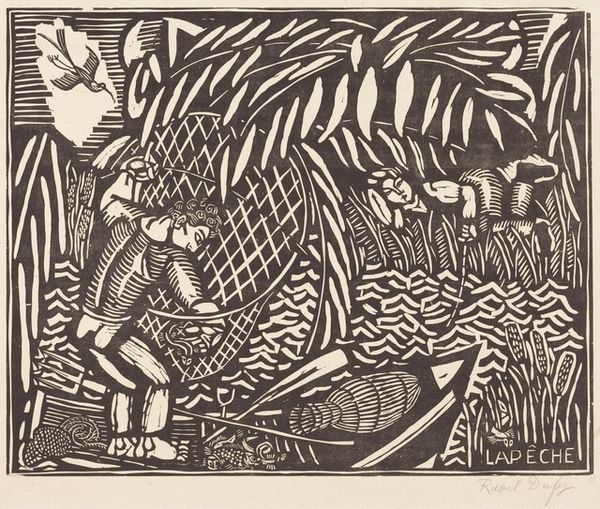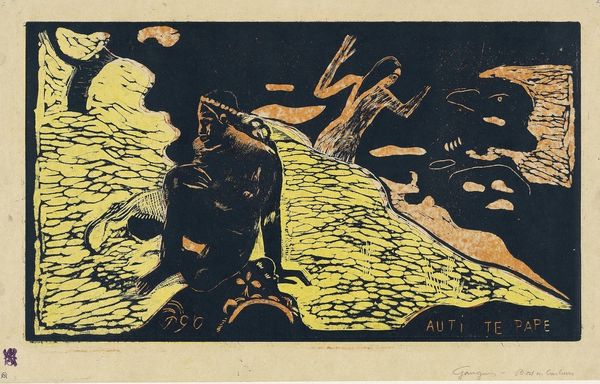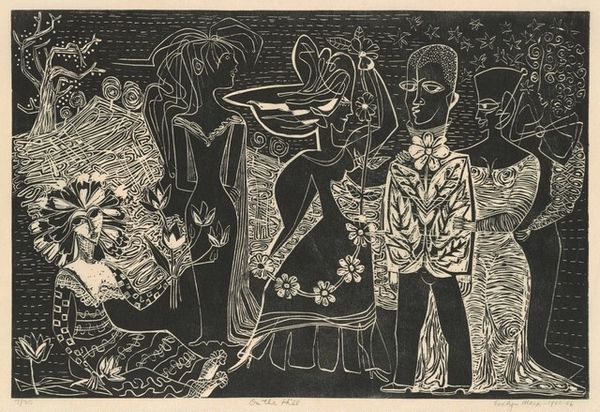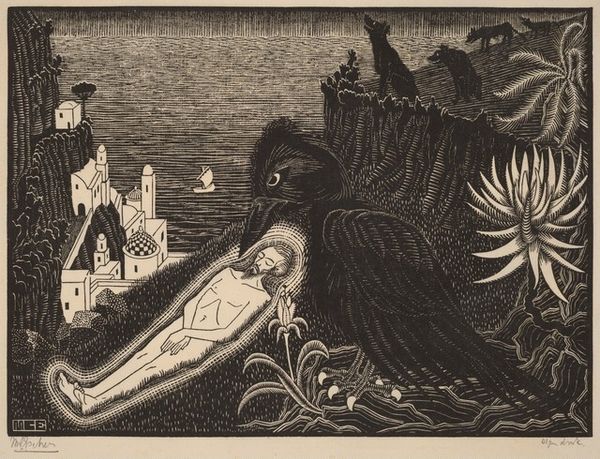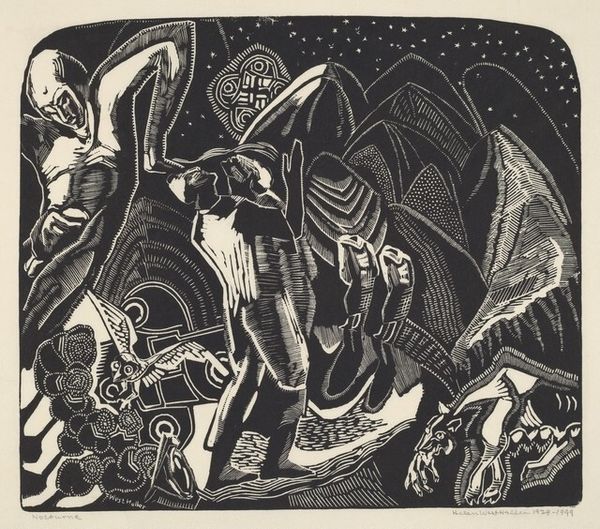
Dimensions: Image: 275 x 363 mm Sheet: 338 x 430 mm
Copyright: National Gallery of Art: CC0 1.0
Editor: We’re looking at “On the Beach,” a woodcut print created around 1957 by Margaret Burroughs. It's a scene filled with figures – families on the shore. I'm struck by the contrast of black and white, how it creates this flattened, almost graphic feel. What jumps out at you when you look at it? Curator: Indeed. Consider first the medium: the woodcut. Its very nature forces a simplification, a reduction to essential forms. Observe how Burroughs uses line—parallel, hatching, cross-hatching—to create not just form, but also texture and value. Note, for example, how the striations of the sky contrast with the speckled dress. Does this juxtaposition tell us anything? Editor: Perhaps how distinct the different areas are: sky, water, and people. Everything is separated by the lines, emphasizing their different textures. But also they all coexist within the frame? Curator: Precisely. This visual arrangement dictates the artwork's content. There's a fascinating interplay between positive and negative space, between presence and absence. What affect does this visual structure have on the viewer? Editor: I guess, this constant switching between the black and white shapes, make it visually exciting! It feels playful even if it is very high contrast, maybe the arrangement of figures keeps the playfulness of it. Curator: Indeed! We find dynamism not in tonal gradation but in pure form. It encourages the eye to engage in a sort of dance across the surface. I think it is visually impactful in the way that formal elements come together as meaning, that is exciting. Editor: I've learned a lot about just looking closely! Seeing the work of the woodcut influencing the image has totally reshaped my view of it. Curator: I agree, the artist is in collaboration with the formal constraint of the material. An enriching journey of discovery through formal constraint and potential!
Comments
No comments
Be the first to comment and join the conversation on the ultimate creative platform.
